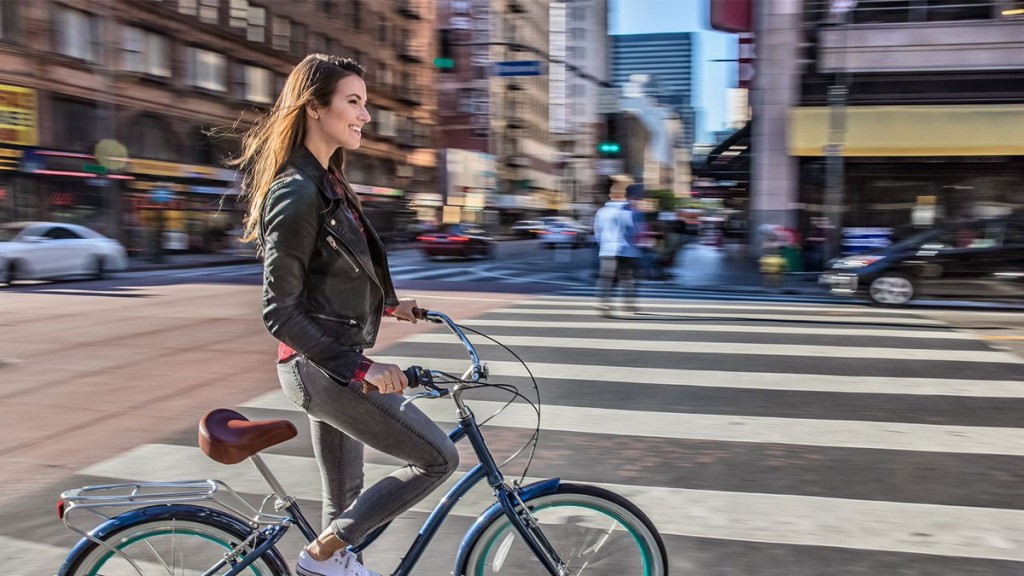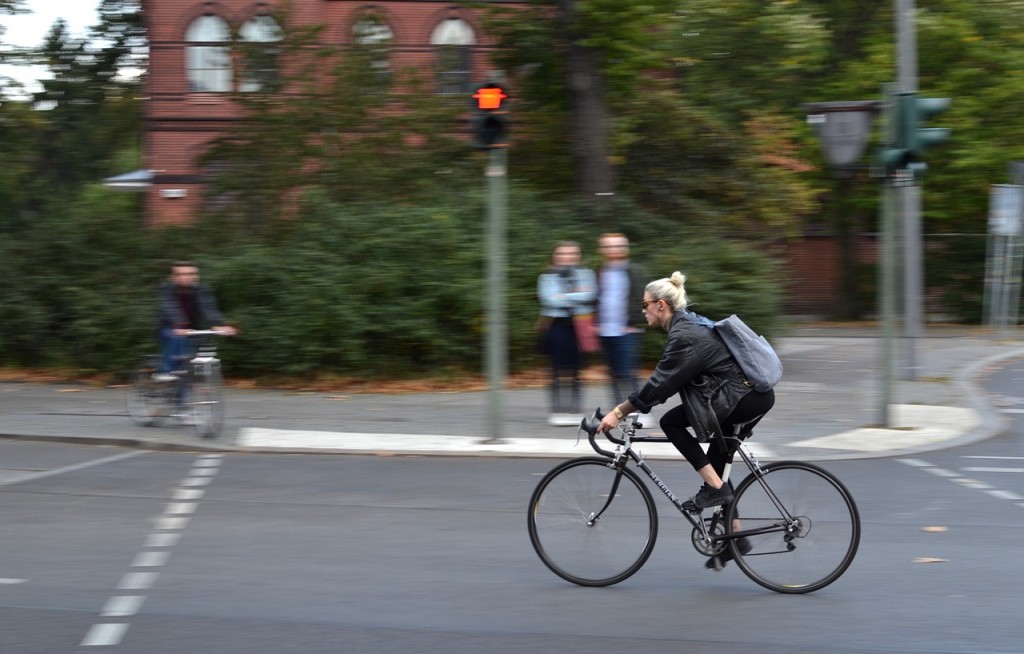 "Road diet" cities place more emphasis on pedestrians and bicycles than cars. Photo source: Sixthreezero.co
"Road diet" cities place more emphasis on pedestrians and bicycles than cars. Photo source: Sixthreezero.co
Whether you recognize it or not, wide, open roads psychologically trick you into driving a little faster and that is why cities are deciding to go on a "road diet."
Many roads in America are designed to accommodate a significant number of cars moving quickly, but sometimes the road is wider than is really necessary.
Downtown main streets are especially effected by this. As areas of high pedestrian activity, they are usually not accommodating to foot traffic or bicyclists, with high-speed roads and wide lanes taking up all of the space, leaving narrow sidewalks as an afterthought.
If drivers naturally feel like they need to increase their speed because the roads are wide, making it unsafe for pedestrians and cyclists, your town might need a road diet.
A what? You heard that right, a road diet. Just like a trendy food diet is focused on slimming your waistline, road diets emphasize slimming the roads to make them safer.
Road diets explained
"A road diet typically consists of reducing and/or narrowing travel lanes, reducing speeds, shortening the distance for people walking across the street, and improving crossings and intersections," said Robert Ping, Executive Director of the Walkable and Livable Communities Institute (WALC).
"Road diets often include adding pedestrian lighting and landscaping, and creating places for people to rest and socialize."
 More cities are carving out bike lanes to promote commuting by bicycle instead of cars
More cities are carving out bike lanes to promote commuting by bicycle instead of cars
The WALC Institute founder, Dan Burden, is the one who coined the term "road diet" as a way to alter the road to improve the flow of traffic, while making it more friendly for other modes of travel like pedestrians, trams, or cyclists. Burden's 1999 study collected case studies of cities around the nation that implemented a variety of road diets to improve their city's transportation. The results are astounding.
One town in Lewiston, Pennsylvania originally faced major opposition to the changes. But after the updates were complete, "dangerous maneuvers and crashes dropped to nearly zero. Overall trip times were unaffected. Today nearly 95% of those fearing the change are openly thankful to PennDOT for making the roadway better for safety, mobility and access," according to the report.
In Davis, California, a four-lane road was re-designed and painted to be two lanes with a bicycle and turn lane. It's considered a diet because the excess lanes were reduced instead of entirely new lanes added. This type of change alters the mindset of the community since it encourages them to walk instead of drive.
Running errands can be an actual run, not a ride in a gas-guzzling, inefficient vehicle. As people choose to walk or bicycle around town instead of hopping in their car, their physical and mental health is greatly improved. There is also a much stronger sense of community as people walk past shops and wave at neighbors.
Slowers speeds, safer crossings and more bike lanes
Walkable and bikeable communities plan around people instead of automobiles. According to WALC, this may include aspects like:
- Smaller blocks
- Streets designed for lower traffic speeds
- Safe pedestrian crossings
- Bicycle facilities such as bike lanes and bicycle racks
- Socialization areas like parks and plazas
- Close proximity between businesses and residential properties
- Mixed-use buildings up to 3-8 stories to allow for socialization and easy walking
Road diets have plenty of benefits, like improved safety and increased bicycle activity. According to WALC, rear-end and sideswipe collisions decrease because vehicle speeds are slowed 3-5 miles per hour.
The diets decrease the number of drivers speeding more than 5 mph past the speed limit by 70%. This small adjustment can make a big difference in the number of accidents.
Besides decreasing speed, road diets can reduce the lane changes that drivers will take. Some drivers swerve between lanes, which is one of the most common causes of accidents. Reducing the lanes reduces this risk.
Several cities around the country have implemented road diets to improve transportation and infrastructure.
Data on the benefits of road diets
Data collected from small towns in Iowa and large cities in California and Washington found crash reductions across the board, with 47% decrease in Iowa and 19% decrease in the larger cities. Stranded or broken down vehicles can move to the center or bike lanes instead of stalling in a lane of traffic, which improves traffic flow and reduces accidents.
Pedestrian safety is also improved. Instead of darting across four lanes, the middle lane or median allows them to cross one lane and wait to cross the other.
 Cities are also attempting to slow vehicular traffic down to make roads safer for pedestrians and bicyclists
Cities are also attempting to slow vehicular traffic down to make roads safer for pedestrians and bicyclists
The improved pedestrian paths, with added amenities like lights and park benches, can boost business and property values. Instead of driving past businesses mindlessly to get to their destination, bikers and pedestrians are more likely to bring businesses the foot traffic they have always wanted.
Bike lanes are appealing to both cyclists and pedestrians. While it makes room for those on bicycles, it also provides a buffer for pedestrians on the sidewalk so they are not walking immediately next to a busy road.
Wider sidewalks are also appealing as you add park benches, outdoor bike racks, and other welcoming features to give it more of a community feel.
Road diets are best implemented on four-lane roads with between 8,000 and 20,000 vehicles per day. Greater daily traffic means that the road can become congested if the lanes are reduced. But in cities and intersections that are a right fit, road diets can make all the difference at improving safety and efficiency.
Where to start road dieting
Burden's study from 1999 is still a helpful place to start, but there are other resources by WALC that are also insightful. According to their livability fact sheet about road dieting, the initial step is to engage the public as soon as possible to relieve anxieties and give residents ownership over the project.
Afterwards, begin building support as you launch a pilot project in an area with light traffic to demonstrate what road dieting looks like. Target downtown areas and those that are rebuilding and growing economically.
Next, you can begin designing your project, keeping in mind what makes your community unique and what solutions will complement your traffic volume. Carefully document the before, during, and after to help as you conduct future road diets. You will also want to display clear signage and communicate the plans as the project is underway.
For more information about road diets, head to the WALC Institute.
Note: The Park and Facilities Catalog is a national supplier of bicycle parking racks, bike rooms, custom bike racks and other site furnishings. The company is also designated as a Bicycle Friendly Business and is an advocate for bike lanes and safer streets for bicyclists and pedestrians.


